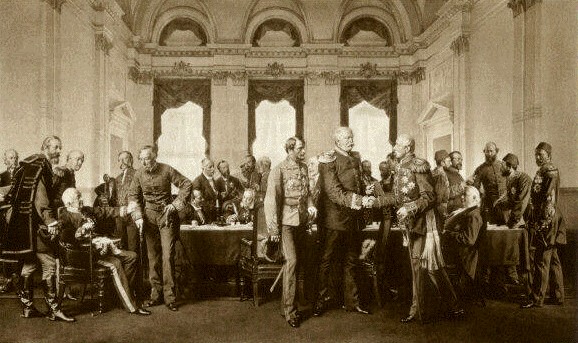The 19th century marked a pivotal period in African history, as European powers aggressively expanded their empires through the Scramble for Africa. During this time, European nations scrambled to claim vast swathes of African territory, driven by a desire for economic resources, strategic control, and national prestige. One of the regions impacted by this imperial contest was Namibia, which, by the end of the 19th century, would be incorporated into the German colonial empire as German South West Africa.
Namibia’s role in the Scramble for Africa is complex, involving early colonial exploration, the establishment of settler colonies, and the imposition of European economic systems on indigenous African societies. This article explores Namibia’s experiences during this turbulent period, examining the key players, events, and consequences of European colonialism in the region.
1. Pre-Colonial Namibia: Diverse Societies and Cultures
Before the arrival of European colonial powers, Namibia was home to a diverse range of indigenous societies. These included the Herero, Nama, San, and Ovahimba, each with their own distinct cultures, languages, and social structures. These communities had developed sophisticated ways of life suited to the region’s unique environmental conditions, from the desert expanses of the Namib Desert to the more fertile areas in the north.
The Herero and Nama were primarily pastoralists, relying on cattle for their livelihood and social status. The San were hunter-gatherers, with a deep knowledge of the land and its resources. The Ovahimba, another pastoralist group, had a rich cultural heritage rooted in their traditional customs and religious practices. These indigenous peoples lived largely independent of external influence, maintaining their land and resources as central to their social and spiritual lives.
However, the arrival of European explorers and settlers in the 19th century would significantly disrupt these traditional societies. European powers, eager to secure territories for colonization, sought to impose their control over the land and its resources, fundamentally changing the lives of Namibia’s indigenous peoples.
2. European Exploration and Early Contacts
The first significant European exploration of Namibia occurred in the early 19th century. Portuguese explorers had been sailing along the southern coast of Africa for centuries, but it was the British, Dutch, and German traders, missionaries, and explorers who would have the most direct impact on Namibia in the 19th century.
In the early 1800s, missionaries from Britain and Germany began establishing outposts in Namibia, aiming to spread Christianity and European values to the indigenous populations. The Rhenish Missionary Society from Germany, for example, set up missions in the interior regions, including among the Herero people. Although these missions were often well-intentioned, they also acted as agents of colonial influence, introducing European agricultural methods, education systems, and economic practices that undermined indigenous cultures and traditions.
Simultaneously, Dutch and British traders began to explore Namibia’s coast and interior, establishing trade routes and negotiating with local chiefs. This trade was often centered around valuable resources such as ivory, diamonds, and cattle. European traders established strong relationships with some of the indigenous groups, particularly the Nama and Herero, in order to facilitate their commercial interests. However, these relations were built on unequal power dynamics and were often exploitative, setting the stage for future conflict.
3. The Berlin Conference of 1884-1885: The Partition of Africa
The Berlin Conference of 1884-1885 was a turning point in the Scramble for Africa, as European powers met to divide the African continent among themselves. At the conference, Germany formally claimed German South West Africa (modern-day Namibia) as a colony. This was part of Germany’s broader imperial ambitions in Africa, which also included colonies in Togo and Cameroon.
The decision to create German South West Africa was made with little regard for the existing political boundaries or sovereignty of the indigenous peoples. The Herero, Nama, and other groups living in Namibia had no say in the European decisions regarding their land. As a result, the Berlin Conference not only cemented European control over Namibia but also began a long period of exploitation, violence, and cultural erasure for its indigenous inhabitants.
4. German Colonial Rule and the Impact on Namibia’s Indigenous Populations
In the years following the Berlin Conference, Germany moved quickly to establish control over Namibia, sending settlers, military forces, and administrators to the region. In 1885, German trader and explorer Franz Adolf Lüderitz secured a formal land concession along the coast, establishing a German settlement at Lüderitzbucht (modern-day Lüderitz). From this base, Germany began to expand its colonial holdings into the interior.
The Herero and Nama peoples initially viewed the Germans as potential trading partners but soon found themselves under increasing pressure to accept German rule. The Germans imposed colonial policies that prioritized the needs of European settlers over those of the indigenous populations. German settlers were granted land, while local people were displaced from their land. Taxation, forced labor, and other exploitative practices were introduced, leading to widespread poverty and suffering among the indigenous peoples.
The German colonial government began a campaign to introduce European-style farming and economic systems, forcing indigenous communities to abandon their traditional practices. The Herero, for example, were forced to give up much of their cattle and adopt farming practices that were alien to their cultural traditions. The Nama were similarly displaced and subjected to harsh treatment, their traditional systems of social organization disrupted by the Germans.
The German military was also involved in the process of pacification, using force to subdue any indigenous resistance. German soldiers clashed with the Herero and Nama people on several occasions, with the indigenous groups mounting limited resistance against the well-armed German forces. The introduction of military fortifications, settler patrols, and colonial police created an atmosphere of constant conflict and instability, eroding the autonomy of the indigenous populations.
5. The Herero and Nama Resistance: The Seeds of Conflict
By the late 1890s, the tension between the indigenous peoples and the German settlers had reached a breaking point. The Herero, led by Samuel Maharero, and the Nama, led by Jakob Morenga, began to resist German colonial rule. This period of resistance culminated in the Herero and Nama genocide of the early 20th century, where German forces employed brutal tactics to crush any opposition.
The Germans used military force to suppress the Herero and Nama uprisings, engaging in scorched earth tactics, burning villages, and forcing indigenous populations into concentration camps. It is estimated that between 60% and 80% of the Herero population and half of the Nama population perished during this period.
Despite their valiant resistance, the Herero and Nama were unable to defeat the well-equipped German forces. The genocide marked the culmination of the German colonial effort to completely subjugate Namibia’s indigenous peoples.
6. Legacy: The Consequences of European Colonialism in Namibia
The legacy of the 19th century Scramble for Africa and subsequent German colonialism is deeply ingrained in Namibia’s history. German colonial rule in Namibia created an unequal power dynamic that continues to affect the country today. The Herero and Nama genocide remains a tragic chapter in Namibia’s history, and efforts to seek recognition and reparations for the atrocities committed during this period are ongoing.
The German South West Africa colony was formally administered by Germany until 1915, when it was taken over by South Africa under a League of Nations mandate following Germany’s defeat in World War I. The South African administration continued to enforce discriminatory laws and policies, further entrenching racial inequalities that would persist throughout the 20th century.
Today, Namibia is an independent nation, but the effects of the 19th-century colonial experience continue to shape its political, social, and economic landscape. The struggle for land, reparations, and reconciliation remains central to the country’s efforts to heal from its colonial past.
Namibia’s experience during the 19th century Scramble for Africa was one of resistance, survival, and cultural disruption. The country’s indigenous peoples faced immense challenges as they were forced to navigate the expansion of European colonialism. Although they were ultimately unable to prevent European domination, the legacy of their resistance and the lasting effects of colonialism continue to resonate in modern Namibia.
As the country moves forward, the lessons learned from its colonial past continue to shape its efforts to build a more equitable, sustainable, and inclusive future for all Namibians. Understanding Namibia’s role in the Scramble for Africa is crucial for appreciating the nation’s complex history and its ongoing journey toward reconciliation and justice.













